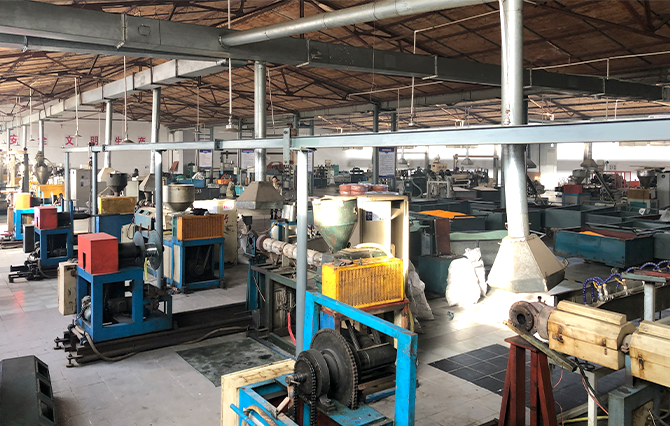tubing for vacuum pump
Understanding Tubing for Vacuum Pumps A Comprehensive Guide
Vacuum pumps play an essential role in various industrial and research applications by creating a vacuum environment suited for processes ranging from material handling to scientific experiments. One critical component that often receives insufficient attention is the tubing used within these systems. Proper tubing selection and maintenance are crucial for the efficient operation of vacuum pumps.
What is Vacuum Tubing?
Vacuum tubing refers to the pipes or hoses that transport gases and vapors from the vacuum system to and from the vacuum pump. This tubing is designed to withstand the negative pressures generated within the system and must be made from materials that prevent the permeation of gases to maintain a consistent vacuum level. Depending on the application, different materials and sizes of tubing may be required.
Materials Used in Vacuum Tubing
1. Polyvinyl Chloride (PVC) Commonly used due to its excellent chemical resistance and lightweight properties. PVC tubing is often utilized in laboratory settings for transferring gases and fluids. Its affordability and the ability to be easily cut to length make it popular, but it is generally not suited for high-temperature applications.
2. Silicone Silicone tubing is known for its flexibility, making it ideal for applications where movement is involved. While it possesses good thermal stability, it may not be suitable for high vacuum levels due to permeability issues.
3. Fluoropolymer For environments requiring stringent chemical resistance, fluoropolymer materials such as PTFE (Teflon) are preferred. They can withstand extreme temperatures, making them suitable for high-performance vacuum applications, particularly in labs involved in chemical processes.
4. Stainless Steel When high strength and durability are required, stainless steel tubing is often the go-to choice. It is particularly beneficial in environments where contaminants must be minimized, as it is not prone to degradation and helps maintain vacuum integrity.
5. Rubber Rubber tubing can also be used but tends to have limitations in terms of temperature and vacuum levels. It may be suitable for low-pressure applications; however, it can degrade over time when exposed to certain chemicals.
Factors to Consider When Selecting Tubing
When selecting vacuum tubing for your system, consider the following factors
tubing for vacuum pump

- Diameter The internal diameter of the tubing affects the flow rate and vacuum efficiency. A larger diameter allows more gas to be evacuated quickly, but it can also increase the system's overall volume and the time needed to achieve the desired vacuum.
- Length Longer runs of tubing can introduce resistance in the system, leading to diminished performance. It is advisable to minimize the length of tubing wherever feasible to enhance vacuum efficiency.
- Flexibility vs. Rigidity Depending on the application, you may need flexible tubing for tight spaces or rigid tubing for extended runs. Assessing the environment in which the tubing will be used can guide the selection process.
- Temperature and Pressure Ratings Ensure that the tubing you choose meets the specific temperature and pressure requirements of your application to prevent failures during operation.
Maintenance and Best Practices
To maintain the integrity of the vacuum system and its tubing, regular inspections are necessary. Here are some best practices
- Check for Leaks Leaks can dramatically reduce the efficiency of a vacuum pump. Periodically examine the tubing and connections for signs of wear, cracks, or other damage.
- Clean Regularly Contaminants can accumulate inside the tubing, compromising both the vacuum and the processes it supports. Regular cleaning can help maintain performance.
- Store Properly When not in use, store your tubing in a clean, dry environment to prevent degradation caused by exposure to chemicals or environmental conditions.
Conclusion
Choosing the right tubing for vacuum pumps is vital for ensuring efficiency and longevity within your vacuum system. Understanding the materials available, the factors influencing selection, and the importance of maintenance can help you make informed decisions tailored to your specific applications. Whether in a laboratory, manufacturing plant, or any other setting that requires a vacuum solution, proper attention to tubing will enhance your vacuum pump’s performance and reliability.
-
Top Quality Oxy Acetylene Hoses for Sale Fit for Welding DemandsNewsJul.28,2025
-
The Future of Pneumatic Air Tubes in IndustryNewsJul.28,2025
-
Superior and Reliable LPG Hose Pipe Solutions for Every NeedNewsJul.28,2025
-
Exceptionally Durable and Versatile Premium Braided PVC TubingNewsJul.28,2025
-
Best Adapters for Connecting Garden Hose to PVC Pipe ConnectionsNewsJul.28,2025
-
The Essential Role of LPG Hoses in Safe and Efficient Gas DistributionNewsJul.16,2025














